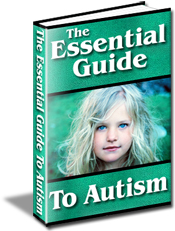Knowing The Symptoms Of Autism
Click Here To Know The Simple Methods To Effectively Spot The 31 Signs of Autism
Autism is a very confusing disorder that tends to affect a persons attention, perception, and thought. There is no clear definition of the symptoms of autisms, because it manifests in different people in many different ways. The manifestation could be from mild symptoms all the way to severe symptoms and everywhere in between. Behavior patterns are most notable when it comes to autism. Generally speaking, those suffering from any autism disorder will have behavior that is inconsistent to what is deemed appropriate for their specific age level.
Known as a pervasive developmental disorder, according to the American Psychiatric Association, the disorder is difficult to diagnose in patients thanks to the broadness of symptoms associated with this particular disorder. The diagnosis of autism usually occurs when the patient shows at least six of the twelve outlined symptoms of autism in regards to behavior, communication, and social interaction.
Behavior
For diagnostic purposes, the individual must possess at least two of the four listed symptoms of autism:
1. Is extensively preoccupied with restricted and stereotyped interest patterns that appear to be abnormal, due to focus or intensity.
2. Repetitive and stereotyped motor skills such as difficult movements of the entire body, twisting fingers, flapping fingers, or flapping hands.
3. Extensively preoccupied with specific object parts and pieces.
4. Does not associate well with rituals or specific routines.
Communication
For diagnostic purposes, the individual must possess at least one of the four listed symptoms of autism:
1. Lack of or delay in spoken language development. If the delay or lack of language skills is unaccompanied by any attempts of compensation, through other communication modes. For example, mime or gestures.
2. Has proper spoken language development with the inability to sustain or initiate in general conversation with peers, doctors, and family members.
3. Repetitive and stereotyped use of idiosyncratic language or language.
4. In ability to participate in social imitation playing or make-believe playing, spontaneously, in regards to their level of development.
Social Interaction
For diagnostic purposes, the individual must possess at least two of the four listed symptoms of autism:
1. Impairment is marked by using a variety of behaviors in a non-verbal manner. For example, social interaction gestures, body posture, facial expressions, and gazing eye-to-eye.
2. Has the inability to properly develop relationship with his or her peers in a many that is appropriate for their age and level of development.
3. Inability to spontaneously share with others in their achievements, interests, and enjoyment.
4. Inability to participate actively within social environments such as games or playing. The patient prefers to remain in solitude, when playing or taking part in activities. Other people are only involved as aids or tools in their play.
As you can see from the above, it is extremely difficult to diagnose a person even when some of the symptoms of autism are present. It is ultimately important to speak with your physician about your concerns and have your child tested for any one of the autism disorders, if you feel they are showing symptoms of autism.
Melody Franks works in the medical field and writes articles related to health and wellness. She regularly submits articles to Be Strong Live Long and The Search for Wellness.
Labels: autism_child_in_sign, autism_history, autism_ontario, autism_speaks.org, autism_treatment, autism_type

